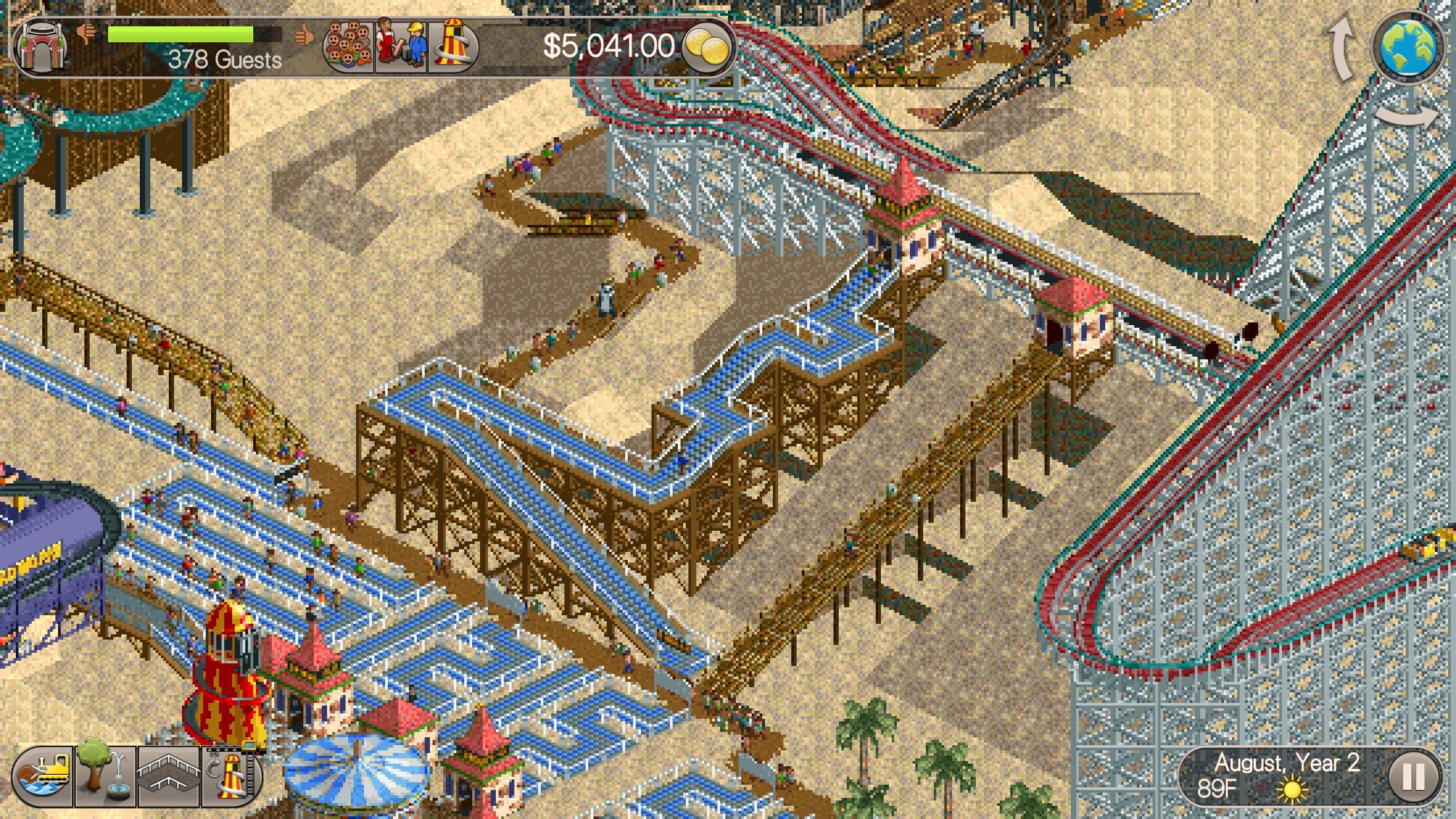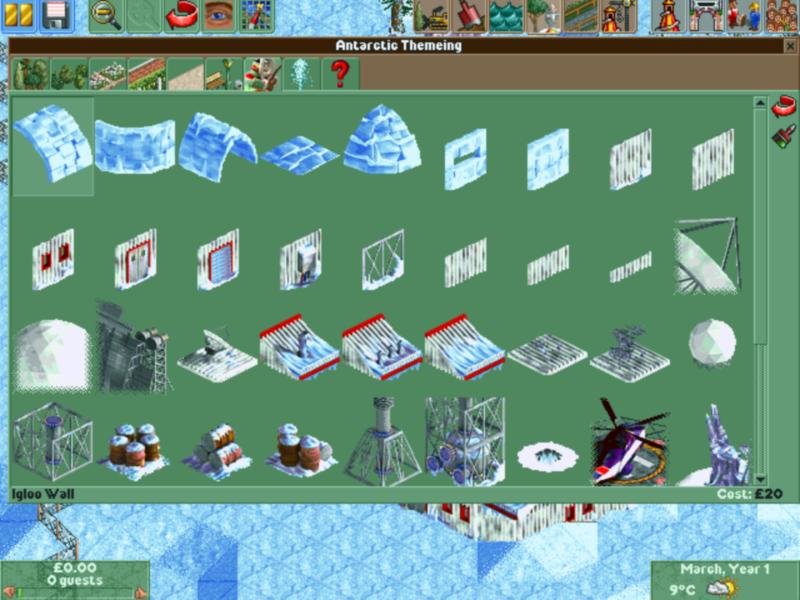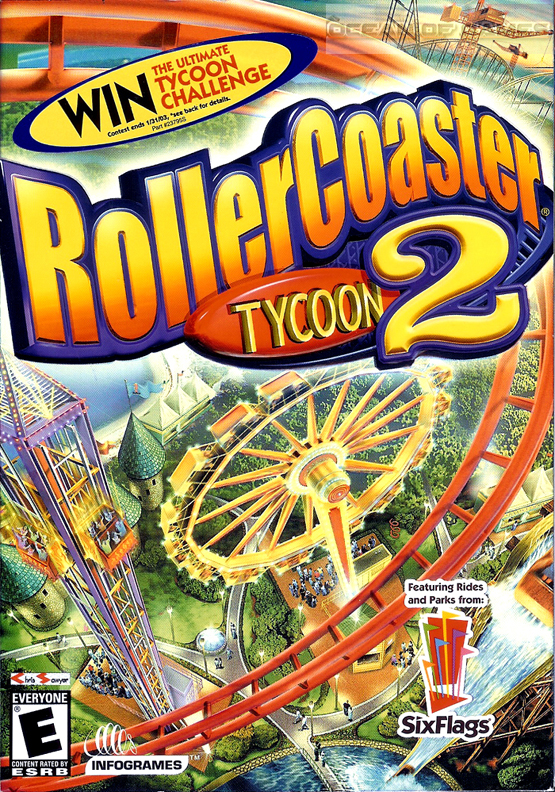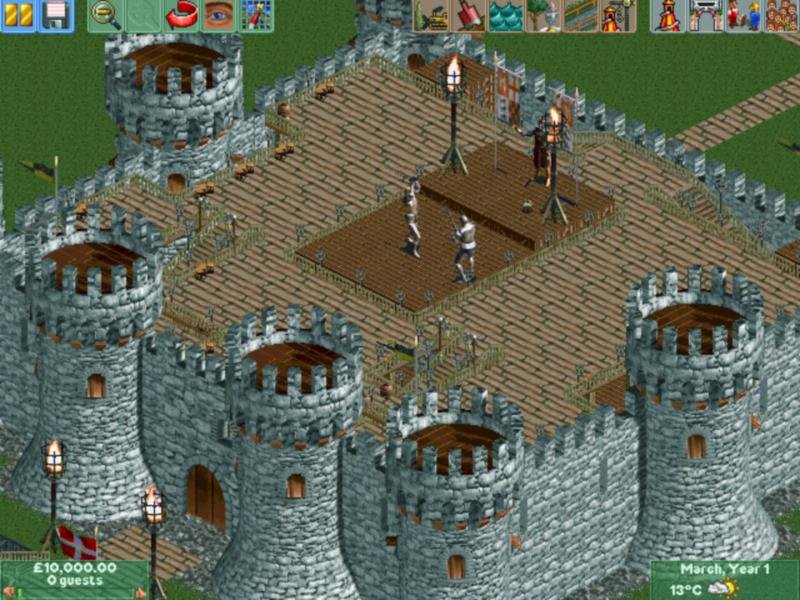
Like the original game, RollerCoaster Tycoon 2 still uses an isometric perspective. more images for coaster cars, allowing for smoother animations). Initially, RollerCoaster Tycoon 2 was not entirely popular with fans of the first game, as the game engine and interface were the same as RollerCoaster Tycoon, with minor improvements in graphics (e.g.

When creating a scenario, the player can save the scenario in any of the five folder categories.Īs with the previous game, players can upload their saved track designs onto the "ride exchange." Track designs from RollerCoaster Tycoon and RollerCoaster Tycoon 2 could later be imported into RollerCoaster Tycoon 3 (where the game would render the tracks in 3D for the first time).

The "Real" parks folder tab contains five real-life Six Flags parks with many attractions already constructed, and the "Other" folder with empty versions of each of the Six Flags parks. In this title, scenarios are divided into five folder tabs (Beginner Parks, Challenging Parks, Expert parks, "Real" parks, and Other Parks) according to their difficulty and content. Unlike the original RollerCoaster Tycoon, where the player had to complete currently available scenarios to unlock new scenarios, all of the scenarios in RollerCoaster Tycoon 2 are available from the start. Guest AI was improved, allowing for the creation of paved areas, whereas previously any path wider than a single terrain square would cause them to become 'confused'. Players can also view park guest status, as well as rename and track guests, by clicking on them. The game also contains a variety of new themes and music for attractions. Furthermore, many popular rides in Six Flags theme parks can be used in RollerCoaster Tycoon 2 but not edited. The game is also licensed by Six Flags to include scenarios based on five of their real parks (such as Magic Mountain, Great Adventure, and Over Texas). Plus, another is Rollercoaster Designer, which players can make their own roller coasters to test and save them to be used in other levels. Players can select an objective with no time restraints and no money restraints, creating a sandbox mode. Another popular inclusion was a scenario editor. Another was that the addition of the ′bulldozer,' which allows the user to remove multiple parts of scenery, not just one at a time. One feature that proved to be quite popular was the unofficial addition of a feature that allows players to import and use user-created scenery items. For example, the " The Wooden Twister Coaster" is now included in the " The Wooden Roller Coaster". Also, some old ride designs have been merged into others. For example, " The Scrambler" has been renamed " Twist". Many of the rides from the original RollerCoaster Tycoon have been modified and/or renamed. Previously, only rides that had tracks could be built underground, since the player had to build the first piece above the ground, then extend the track below ground afterward. Another departure from the original was allowing any ride or shop to be fixed at any elevation, including underground.


The mechanics in the original game made custom building construction more difficult. Additionally, the game allows a piece of scenery to be locked in place and have its height adjusted, providing greater flexibility. One of the most notable differences from the original game is that RollerCoaster Tycoon 2 features a more robust system for building structures, in which one can lay each piece of wall and roof individually. Players must balance their budget in their expenses and income. Players must satisfy the needs of the visitors by building food stalls, drink stands, bathrooms, souvenir shops, and facilities, like ATMs, information kiosks, and more. The player can further modify the park by changing the land and scenery. Players can choose between various attractions, including transport rides, gentle and thrill rides, roller coasters, water rides, and shops or stalls. The premise of the game is to complete scenarios by successfully building and maintaining theme parks.


 0 kommentar(er)
0 kommentar(er)
